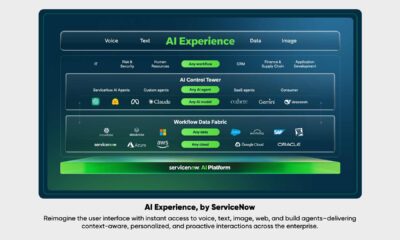Cover Story
Active Resistance Against Cyberattacks Through Robust Solutions and Best Practices
The cover story helps readers understand the trend of cyberattacks, the impact of breaches, required strategies, and the need to inculcate best practices to create active resistance against cyberattacks.
Cybersecurity is one of the most often used terminologies in almost all industries in the context of rising cyber threats, including the exploitation of software vulnerabilities, ransomware attacks, and malicious intrusions in enterprise networks. While digital transformation and cloud business are taken to a new level, the “zero trust” approach becomes a widely appreciated strategy from small and medium-sized enterprises (SMEs) to large corporates.
The time is crucial for cybersecurity professionals and services providers as intruders simultaneously exploit vulnerabilities in software or network systems and make use of the latest technologies to hijack. Reports suggest that office suits, IoT devices, and other communication agents in the enterprise networks are repeatedly found vulnerable when it comes to resisting breaches. Apart from that, the use of AI-powered cyberattacks also became common practice.
Most of the cyberattacks, such as ransomware and malware attacks, are motivated by financial interests. Such attacks are designated to steal personally identifiable information (PII), Social Security information, and credit card details from servers. The stolen information is generally gets sold in underground digital marketplaces. But then, attacks happened on government enterprises and utility service networks are contemplated the political and diplomatic interests.
Protection of Critical Systems from Cyberattack
Cybersecurity is the practice of protecting IT and network systems from potential cyberattacks; it guards data and sensitive information also from digital attacks. Today, an enterprise requires to install multiple agents in its IT system and educate its workforce to combat breaches that originate outside the organization.
Cyberattacks at an enterprise not only cause loss of trust in partners but also bring a bad reputation in the industry especially if the breach is specific to personally identifiable information (PII) of customers. Therefore, enterprises have no choice but to stay upfront in protecting their critical systems.
The average cost of a data breach was USD 3.86 million globally in 2020. The cost includes:
- Expenses of discovering and responding to the breach
- Downtime
- Revenue
- Reputational damage
Most Known Cyber Threats
Even though enterprises and cybersecurity professions establish strong measures against outside breaches, attackers find ways to exploit in-house weaknesses focusing on remote access tools, work-from-anywhere environments, etc.
The following are some of the known cyberattacks:
Malware
They are malicious software variants, such as viruses, worms, Trojans, and spyware and they can be mostly detected using antivirus tools. However, malware presence in the computer can give unauthorized access to systems.
Ransomware
This is a type of malware that locks down files or data and threatens to erase or destroy the data unless a ransom is paid to the cybercriminals who designated the attack. Recently, ransomware attacks have targeted state and local governments across the world.
Phishing/Social Engineering
Phishing scams often take place through emails or text messages that appear to be sent by a legitimate company asking for sensitive information, such as credit card data or login information. Studies find a surge in pandemic-related phishing, tied to remote work.
Distributed Denial-of-Service (DDoS) Attacks
DDoS attacks try to crash a server, network, or website by overloading it with traffic – most often from multiple coordinated systems. DDoS attacks overwhelm enterprise networks through the simple network management protocol (SNMP), used for modems, printers, switches, routers, servers, etc.
Advanced Persistent Threats (APTs)
An intruder or group of intruders infiltrate a system and remain undetected for an extended period. The intruder leaves networks and systems intact so that the intruder can spy on business activity and steal sensitive data while avoiding the activation of defensive countermeasures.
Enforcement of Security
The network and IT systems can be safeguarded by several layers of security. For that enterprises need a well-thought-out strategy, including robust applications, foolproof network systems, and end-user education. Such efforts can keep intruders away from accessing, stealing, or destroying data.
Alain Penel, Regional Vice President – Middle East, Fortinet, rightly pointed out, “To fight today’s evolving threats, organizations should look into a security platform based on a cybersecurity mesh architecture with security solutions that are designed to work together. A cybersecurity mesh architecture integrates security controls into, and across, widely distributed networks and assets.”
He added, “organizations need to develop a security-driven networking strategy that tightly integrates an organization’s network infrastructure and security architecture, enabling the network to scale and change without compromising security operations.”
The following are some of the areas that need a high level of attention subjected to cybersecurity.
Security for Critical Infrastructures: Critical infrastructures handle data related to national security, public health, and the safety of citizens. Not only credible systems but also concrete measures need to be enforced to protect such information.
Network Security: Both wired and wireless (Wi-Fi) connections have to be protected and ensure no intrusions in them.
Application Security: Enterprises should enforce relevant activities to protect applications whether they function on-premise or in the cloud. Security should be built into these at the design stage, with considerations for how data is handled, user authentication, etc.
Cloud and Storage Security: Cloud service providers offer encryption of data on rest (in storage), in motion, and use. In case, an enterprise protects data within its premise need to be on constant alert.
Information Security: Data protection measures, i.e., GDPR, secure your most sensitive data from unauthorized access.
Disaster Recovery: Several cloud service providers offer disaster recovery services to enterprise customers. In case of unplanned events, natural disasters, power outages, or cybersecurity incidents, they can help businesses to recover data in its original form.
End-User Education: Building security awareness across the organization to strengthen endpoint security. For example, users can be trained to delete suspicious email attachments, avoid using unknown devices, click suspicious links, etc.
“Digital immunity and data protection will become the key pillar of growth, trust, and customer retention for businesses, and they will need to efficiently and seamlessly manage an ever-increasing threat profile and attack canvas,” opined Saket Modi, Co-founder & CEO of Safe Security.
Best Practices
“Zero trust” security strategy: Zero trust strategy assumes compromise and sets up controls to validate every user, device, and connection into the business for authenticity and purpose. Organizations can combine security information to enforce validation controls.
Behavior detection: Advanced detection methods such as user behavior analytics and artificial intelligence (AI) need to be imposed in enterprise environments to confront potential intrusions.
Conclusion
Cybersecurity can be enabled with a proper strategy that needs the support of the right kind of solutions and awareness among the staff members of an organization. Let’s conclude the story attributing to the words of Emad Haffar, Head of Technical Experts, Kaspersky, “Deploy advanced cybersecurity controls to enable the discovery of sophisticated and unknown threats, facilitate investigations and allow timely remediation and response; such tools are anti-APT and EDR solutions among others. In addition, provide staff with basic cybersecurity hygiene training, as many targeted attacks start with phishing or other social engineering techniques.”
Cover Story
PLAUD Note Pro: This Tiny AI Recorder Might Be the Smartest Life Upgrade You Make!

By Srijith KN
I’ve been using the Plaud Note Pro for over three months now, and this is a device that has quietly earned a permanent place in my daily life now. Let me walk you through what it does—and why I say that so?
Well at first I thought this wasn’t going to do much with my life, and by the looks of it Plaud Note Pro looks like a tiny, card-sized gadget—minimal, unobtrusive to carry it around.
With a single press of the top button, it starts recording meetings, classes, interviews, or discussions. Once you end your session, the audio is seamlessly transferred to the Plaud app on your phone, where it’s transformed into structured outputs—summaries, action lists, mind maps, and more.

In essence, it’s a capture device that takes care of one part of your work so you can concentrate on the bigger game.
Design-wise, the device feels premium, it features a small display that shows battery level, recording status, and transfer progress—just enough information without distraction. The ripple-textured finish looks elegant and feels solid, paired with a clean, responsive button. It also comes with a magnetic case that snaps securely onto the back of your phone, sitting flush and tight, making it easy to carry around without thinking twice.
Battery life is another standout. On a full charge, the Plaud Note Pro can last up to 60 days, even with frequent, long recording sessions. Charging anxiety simply doesn’t exist here.
Well, my impressions about the device changed once I had an audio captured. I tested this in a busy press conference setting—eight to ten journalists around me, multiple voices, ambient noise—and the recording came out sharp and clear. Thanks to its four-microphone array, it captures voices clearly from up to four to five meters away, isolating speech with precision and keeping voices naturally forward. This directly translates into cleaner transcripts. It supports 120 languages, and yes, I even tested transcription into Malayalam—it worked remarkably well, condensed the entire convo-interview that I had during an automotive racing show that I was into.
Real meetings or interviews are rarely happens in a neat environment, and that’s where I found the Plaud Note Pro working for me. It captures nuances and details I often miss in the moment. As a journalist, that’s invaluable. The app also allows you to add photos during recordings, enriching your notes with context and visuals.
I tested transferring files over 20 minutes long, and the process was smooth and quick. Accessing the recordings on my PC via the browser was equally intuitive—everything is easy to navigate and well laid out.

Now to what is inside this tiny recorder. Well, the core of the experience is Plaud Intelligence, the AI engine powering all Plaud note-takers. It dynamically routes tasks across OpenAI, Anthropic, and Google’s latest LLMs to deliver professional-grade results. With over 3,000 templates, AI Suggestions, and features like Ask Plaud, the system turns raw conversations into organized, searchable, and actionable insights. These capabilities are available across the Plaud App (iOS and Android) and Plaud Web.
Privacy is what I happen to see them look at seriously. All data is protected under strict compliance standards, including SOC 2, HIPAA, GDPR, and EN18031, ensuring enterprise-grade security.
What makes the AI experience truly effective is the quality of input. Unlike a phone recorder—where notifications, distractions, and inconsistent mic pickup interfere—the Plaud Note Pro does one job and does it exceptionally well. It records cleanly, consistently, and without interruption, delivering what is easily one of the smoothest recording and transcription experiences I’ve used so far.
I’m genuinely curious to see how Plaud evolves this product further. If this is where they are today, the next version should be very interesting indeed.
“The Plaud Note Pro isn’t just a recorder; it’s a pocket-sized thinking partner that captures the details so you can think bigger, clearer, and faster.”
- Plaud Note Pro is now available for pre-order at https://uae.plaud.ai/pages/plaud-note-pro
- Plaud Note and NotePin are available at https://uae.plaud.ai
Cover Story
ICT CHAMPION AWARDS – 18TH EDITION

The ICT Champion Awards return with their 18th edition, continuing a long-standing tradition of recognising excellence across the Middle East’s ICT landscape. The awards bring together industry leaders, technology innovators, and decision-makers for an evening dedicated to celebrating impact, leadership, and progress across the region’s digital ecosystem.
ABOUT ICT CHAMPIONS AWARDS
This programme is designed to highlight and honour exceptional achievements across the Middle East’s ICT ecosystem, celebrating organisations that continue to demonstrate excellence in innovation, growth, resilience, and leadership. The ICT Champion Awards aim to inspire progress while recognising sustained contributions that have shaped the region’s technology landscape over time.
Integrator Media proudly presents the ICT Champion Awards – 18th Edition, recognising distinguished technology organisations across enterprise solutions, critical and public infrastructure, cybersecurity, and digital transformation. More than an awards platform, the ICT Champion Awards represent a long-standing commitment to acknowledging industry leadership and real-world impact. The programme serves as a trusted stage to honour innovation, reliability, and the organisations addressing the evolving demands of today’s interconnected and security-driven digital environment.
AIM OF ICT CHAMPIONS AWARD
HONOR INNOVATION: Mark major milestones in the Middle East in the technology domain.
BENCHMARK SUCCESS: Highlight significant technology innovations and achievements in the Middle East landscape.
ACKNOWLEDGE KEY CONTRIBUTIONS: Honor and value key contributions made by leading technology organizations in the Middle East.
AWARD EXCELLENCE: Acknowledge and award accomplishments made by organizations to address the increasing demand in the technology domain.
PROMOTE COMMUNITY ENGAGEMENT: Establish a platform for the technology community to unite, celebrate successes, and inspire future accomplishments.
WHY SHOULD YOU PARTICIPATE?
STATEGIC NETWORKING: Connect with top experts and decision-makers in the ICT industry. This is your chance to build valuable relationships and expand your professional network.
MAXIMUM EXPOSURE: Aligned with INTERSEC 2026, the event ensure unparalleled exposure as the entire ICT community gathers in one place. Your brand will be in the spotlight, drawing high impact from the audience that are aligned with security, technology, and enterprise transformation industry.
CHANNEL & PARTNER ENGAGEMENT: Promote your brand directly to prospective partners and clients. This platform provides a unique opportunity to discuss your offerings and build new connections.
BRAND AMPLIFICATION: Participate and leverage multi-level branding opportunities through our extensive print, digital, and social media coverage.
HIGH-PROFILE BRANDING: Gain high-profile branding before, during, and after the event across multiple mediums, including print and online platforms.
EVENT DETAILS:
- Date: 13th January 2026
- Venue: Hyatt Regency, Dubai Creek Heights, Dubai
- Time: 6:00 PM – 10:30 PM
- Map Location: HERE
- Event Registration Link: HERE
- Event Nomination Link: HERE
- Event Agenda: HERE
AWARD NIGHT HIGHLIGHTS
Cover Story
BEYOND STORAGE: LEXAR’S MIDDLE EAST EDGE

Exclusive Interview with Fissal Oubida, General Manager – Middle East, Africa & India, Lexar
In the crowded world of memory storage—where products often blur together and price wars dominate—Lexar has charted a distinct course. Just three years ago, the brand was caught in the same cycle that ensnares many technology companies: chasing competitor pricing, maintaining distance from customers, and treating partnerships as transactions. Today, Lexar stands as an industry benchmark, followed by major competitors rather than the other way around. But this only scratches the surface of what we’ve accomplished, and what it reveals about sustainable differentiation in commoditized markets through an approach that seems almost anachronistic in modern tech: genuine human relationships.
Founded in 1996 to deliver innovative, industry-leading memory solutions worldwide, Lexar has transformed and grew from complete market irrelevance to leading the photography memory card segment in the Middle East and Africa markets. From a price-following commodity brand to a standard of trust and reliability, particularly in markets like the UAE and Saudi Arabia, where reseller ecosystems thrive on relationships and personal engagement.
Bridging the Gap
The industry often overlooks a critical layer of the value chain. Distributors may handle millions in volume, but their success depends on dozens of smaller resellers managing far less—and these vital partners rarely hear from the brands they represent.
Many memory companies remain detached from both resellers and end users. Their social media feeds resemble product catalogs, their strategies revolve around discounts, and authentic connection is missing. In such a market, trust is scarce, and loyalty fragile.
Immersing in the Market
Lexar rejected this detachment. Every two to three months, the company’s leadership visits partners door-to-door across the UAE and Saudi Arabia, markets where face-to-face trust is essential. India has also been part of this journey, but the foundation of Lexar’s approach was built in the Middle East. During these visits, products are brought directly into stores, resellers’ daily challenges are closely observed, and customer interactions with Lexar cards are carefully studied—insights that cannot be captured through reports or remote communications.
This philosophy mirrors Starbucks founder Howard Schultz, who worked shifts in his own cafés to understand the customer experience. Market realities cannot be absorbed from a boardroom; they must be witnessed firsthand, unfiltered.
Digital Authenticity
The same principle drives Lexar’s digital presence. While many technology brands publish sterile product updates, Lexar’s regional platforms highlight people, culture, and real interactions—team moments, community events, and behind-the-scenes glimpses.
Some worry this dilutes product focus. Lexar believes the opposite: its products exist to safeguard human experiences, and its marketing reflects that reality. In relationship-driven markets, human connection often builds stronger affinity than technical specifications alone.
Quality as Strategy
Authenticity is reinforced by quality. Unlike competitors that ship directly from factories to customers, Lexar tests every unit in dedicated facilities, cutting the defect rate to under 0.5%—well below industry averages ranging from 5% to 25%.
This goes beyond cost-benefit calculations. A defective product generates frustration, online complaints, and lost trust. Preventing such failures is not merely operational efficiency—it is reputation management.
Lexar’s partnership with SK Hynix exemplifies this approach. The brand is the only gaming memory company authorized to display the SK Hynix logo—a mark of quality from a supplier trusted by aerospace companies and NASA. While others obscure component sourcing, Lexar embraces transparency, showing customers exactly what they are buying.
Escaping the Price War
Perhaps the most significant change was breaking free from reactive pricing. Previously, entire teams monitored competitor rates to adjust Lexar’s pricing, fueling a cycle of cuts and shrinking margins.
Today, Lexar focuses on value and reliability. In the memory storage industry, every product consists of a chip that accounts for 80% of product cost, a controller, and housing. When other memory brands offer significantly lower prices, unfortunately these low prices often indicate refurbished or compromised components. By educating partners on this reality, conversations shift from discounts to dependability.
A Case Study: Trust at the Heart of Middle Eastern Markets
The clearest expression of Lexar’s philosophy can be seen in the Middle East’s reseller ecosystem. In Dubai’s Computer Plaza, Bur Dubai, and across the bustling technology markets of Riyadh and Jeddah, relationships define business outcomes. Transactions here are not purely about specifications or discounts—they are shaped by familiarity, presence, and trust.
Lexar’s approach is simple but uncommon: leadership spends time on the ground, carrying products into shops, sitting with resellers for hours, and listening to their challenges. These engagements transform transactional partnerships into genuine alliances, building credibility in ways no marketing campaign could replicate.
The results are tangible. Partners see Lexar not just as a supplier, but as an ally invested in their growth. Presence in these markets reshapes pricing conversations, shifts perceptions of quality, and elevates Lexar from a commodity brand to a trusted benchmark.
India later provided another proving ground, particularly in its vast wedding photography industry, where storage reliability is mission-critical. But it was in the Middle East that the model was first forged—the recognition that in relationship-driven markets, presence and trust are as powerful as technology itself.
The Lexar Way
What emerged from this transformation is the philosophy known as “The Lexar Way”—a commitment to human connection, uncompromising quality, and transparent value. This also represents a fundamental departure from traditional technology company operations and a unique culture that is not imposed from the top down; it spreads through example. As technology products become increasingly commoditized, companies must find new differentiation methods beyond specifications and pricing. Lexar’s experience suggests that authentic human relationships, transparent communication, and consistent value delivery can create sustainable competitive advantages even in highly competitive markets.
Active leadership engagement in the field—meeting both major and smaller partners while introducing tailored incentive programs—serves as a powerful example, motivating sales teams to adopt and replicate this hands-on approach. While the financial rewards may be modest, the gesture conveys respect and visibility, fostering loyalty far more enduring than discounts alone.
Building on this ethos, Lexar is actively cultivating a professional community of elite photographers, videographers, and content creators across the Middle East, providing workshops and forums where creative insights are shared, collaboration is encouraged, and the next generation of talent can thrive.
Looking Ahead
The memory industry will always be defined by chips, controllers, and specifications. But in practice, long-term leadership is built on trust.
In the Middle East, Lexar has shown that genuine relationships, transparent communication, and consistent quality can break the cycle of commoditization. These principles extend to other regions, including Africa and India, demonstrating that human-centered strategies are scalable across cultures.
As artificial intelligence, automation, and digital disruption continue to reshape industries, one truth remains constant: technology may evolve, but trust endures. The Lexar Way is not just a regional story; it is a blueprint for how technology brands everywhere can thrive in an era where connection matters as much as innovation.
Every memory card holds more than a chip—it carries a promise. For Lexar, that promise is reliability, authenticity, and commitment to the people who use its products. In a market obsessed with disruption, that may be the most powerful innovation of all.
-

 Tech News1 year ago
Tech News1 year agoDenodo Bolsters Executive Team by Hiring Christophe Culine as its Chief Revenue Officer
-

 VAR9 months ago
VAR9 months agoMicrosoft Launches New Surface Copilot+ PCs for Business
-

 Tech Interviews2 years ago
Tech Interviews2 years agoNavigating the Cybersecurity Landscape in Hybrid Work Environments
-

 Tech News6 months ago
Tech News6 months agoNothing Launches flagship Nothing Phone (3) and Headphone (1) in theme with the Iconic Museum of the Future in Dubai
-

 Tech News2 years ago
Tech News2 years agoBrighton College Abu Dhabi and Brighton College Al Ain Donate 954 IT Devices in Support of ‘Donate Your Own Device’ Campaign
-

 VAR1 year ago
VAR1 year agoSamsung Galaxy Z Fold6 vs Google Pixel 9 Pro Fold: Clash Of The Folding Phenoms
-

 Editorial1 year ago
Editorial1 year agoCelebrating UAE National Day: A Legacy of Leadership and Technological Innovation
-

 Tech Features11 months ago
Tech Features11 months ago5 Urgent Questions About Healthcare Network Cybersecurity in the Middle East























